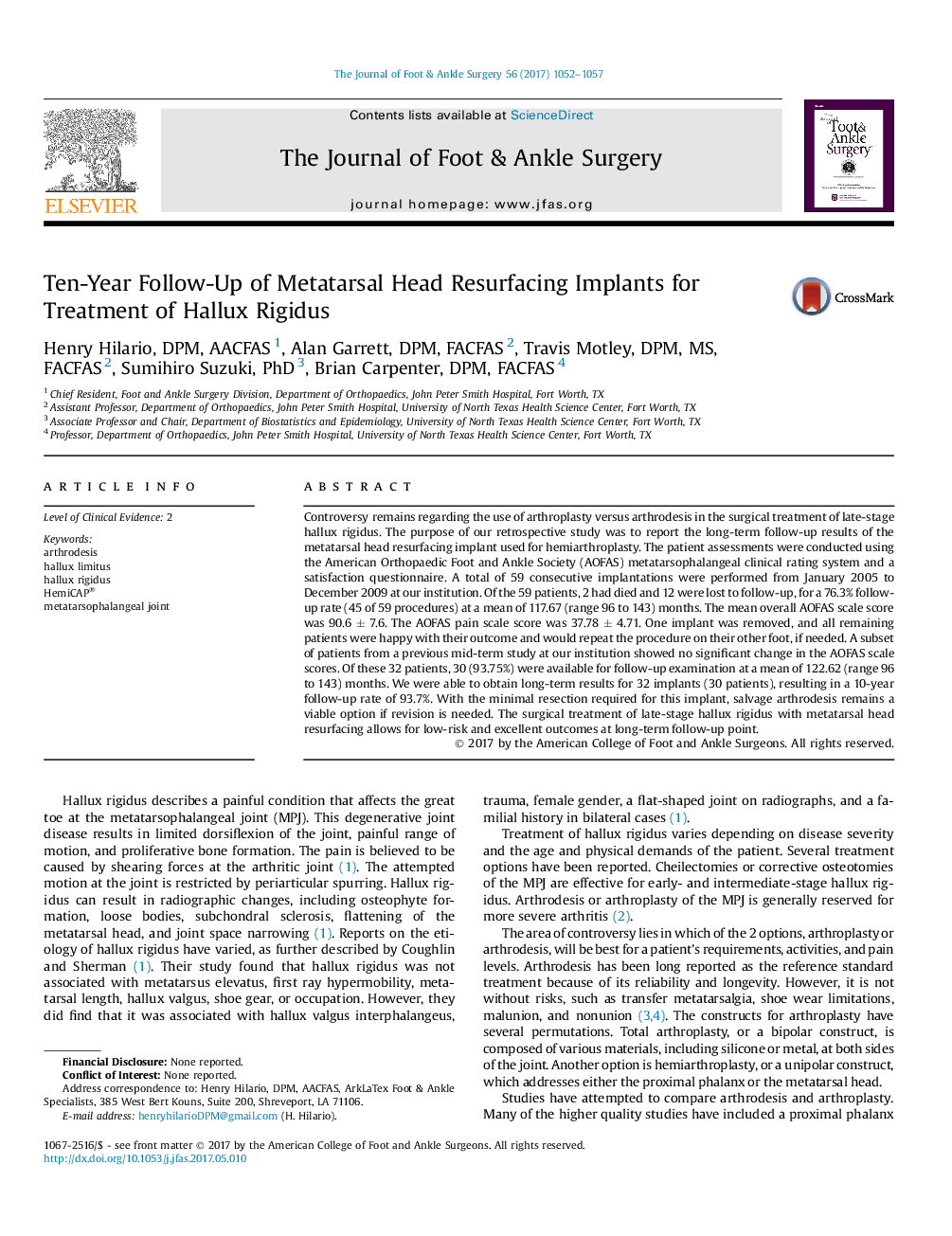| Article ID | Journal | Published Year | Pages | File Type |
|---|---|---|---|---|
| 5575933 | The Journal of Foot and Ankle Surgery | 2017 | 6 Pages |
Abstract
Controversy remains regarding the use of arthroplasty versus arthrodesis in the surgical treatment of late-stage hallux rigidus. The purpose of our retrospective study was to report the long-term follow-up results of the metatarsal head resurfacing implant used for hemiarthroplasty. The patient assessments were conducted using the American Orthopaedic Foot and Ankle Society (AOFAS) metatarsophalangeal clinical rating system and a satisfaction questionnaire. A total of 59 consecutive implantations were performed from January 2005 to December 2009 at our institution. Of the 59 patients, 2 had died and 12 were lost to follow-up, for a 76.3% follow-up rate (45 of 59 procedures) at a mean of 117.67 (range 96 to 143) months. The mean overall AOFAS scale score was 90.6 ± 7.6. The AOFAS pain scale score was 37.78 ± 4.71. One implant was removed, and all remaining patients were happy with their outcome and would repeat the procedure on their other foot, if needed. A subset of patients from a previous mid-term study at our institution showed no significant change in the AOFAS scale scores. Of these 32 patients, 30 (93.75%) were available for follow-up examination at a mean of 122.62 (range 96 to 143) months. We were able to obtain long-term results for 32 implants (30 patients), resulting in a 10-year follow-up rate of 93.7%. With the minimal resection required for this implant, salvage arthrodesis remains a viable option if revision is needed. The surgical treatment of late-stage hallux rigidus with metatarsal head resurfacing allows for low-risk and excellent outcomes at long-term follow-up point.
Related Topics
Health Sciences
Medicine and Dentistry
Orthopedics, Sports Medicine and Rehabilitation
Authors
Henry DPM, AACFAS, Alan DPM, FACFAS, Travis DPM, MS, FACFAS, Sumihiro PhD, Brian DPM, FACFAS,
